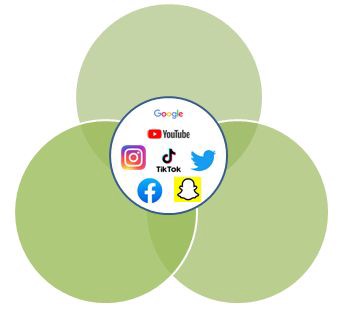No Pain No Problem — Products Providing Passion & Pleasure
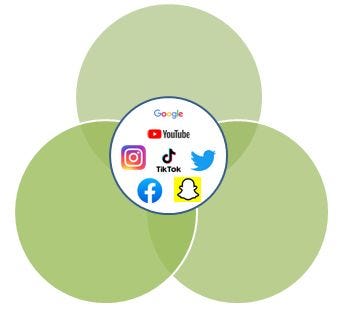
What’s your problem?
“What’s the big problem you are solving?”
It’s probably the most predictable question thrown at entrepreneurs during an investor pitch — repeated so often that it becomes comical and trite.
Inevitably, some armchair entrepreneurship expert — posing as an investor, or a mentor or coach at an accelerator program — speaks up and sagely proclaims the key to startup success:
- “solve a big problem for a customer, or a big market.”
- “identify a big pain that customers have — and relieve that pain with a product.”
- “the greater the pain, the greater the potential”
It all sounds so “profound” and so, so … so logical.
But the most successful entrepreneurs and investors know one big secret:
Not every opportunity starts with pain.
Not every great product solves a problem.
In fact — some of the most wildly successful companies don’t solve problems. Their customers are regular people — and their product makes these people happy. It’s as simple as that. Well, almost.
These products motivate users to spend time, attention, and energy into using that product. The product brings users so much satisfaction, that it makes them feel enthusiasm, delight, and joy.
Identifying and solving problems is pretty straight forward — not easy — but straight forward:

New products that solve problems — works best for B2B — where problems cause lost time, lost opportunity, and lost productivity — which translates into lost money. Entrepreneurs who create products that solve these B2B problems always have a good chance at success.
But consumers behave differently. People outside of work also like to have their problems solved, but they don’t always embrace solutions to their problems: Sometimes they endure or sometimes they wait and and hope the problem goes away. Often, people often try to solve the problem themselves, despite more effective solutions available.
People are not always logical. People are not always rational. People are driven by emotions and desires.
So, what motivates people to spend so much time, energy, emotion — and money — on modern products?
It’s the new Maslow.
You remember Maslow? His Hierarchy of Needs is still fundamental for understanding what motivates most humans.

We don’t have to stress too much over basic survival or safety as our ancestors did. Sure, we pay for our basic needs for food, health and safety (though not always first). It’s the stuff at the top of the hierarchy that people pay a premium for: Belonging, Self-Esteem and Self-Actualization.
Today, there’s a new model for understanding what motivates people. Entrepreneurs (and investors) can find a goldmine of opportunity, and ways to provide extraordinary value to users.
It starts with a new spin on a basic need: “The Need for CONNECTION”
The need for connection definitely isn’t new. It’s part of the need for “belonging” — the need to interact with people and groups that share our interests and our attributes: The need to “find your tribe.”
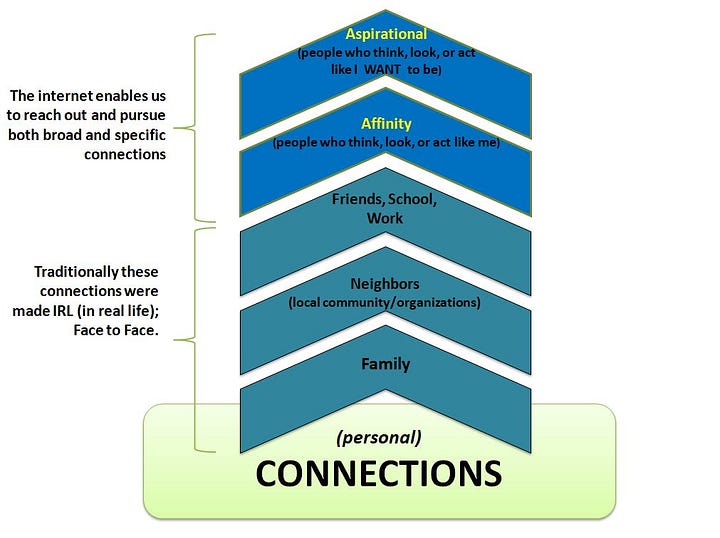
The more relevant the connection, the more intense the sense of belonging. The internet, and social networks opened the floodgates, and fuels our need for belonging “on steroids.”
Now that we’re all hyper-connected and practically living on social networks — there’s a new set of basic human needs, and it’s not a hierarchy.
The 3 Circles of Modern Desire
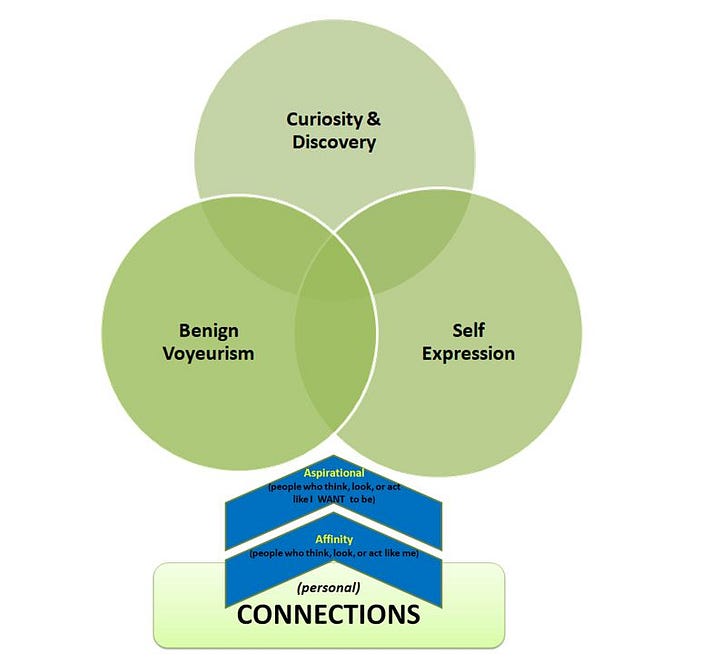
People are willing to spend almost unlimited time, money, and energy on anything that fuels:
CURIOSITY & DISCOVERY
Fuels our desire to be taken on a journey into the unknown — sometimes to escape, sometimes to seek and find. We want to be surprised, or we want to learn. And sometimes go on “journeys” just for stress relief, procrastination, and as a cure for boredom.
BENIGN VOYEURISM
(aka observation and surveillance)
Modern social networks give us the ability to view other people’s lives, habits, opinions, actions and even their thoughts — that traditionally might have been private. Benign Voyeurism isn’t just peering into other people’s lives, it’s:
- “I want to see want other people do, so I know how far from normal my own secret behavior is”, or
- “I want to see that there are other people like me.
Benign Voyeurism fuels our need for validation and self esteem. Yes, sometimes there’s a secret delight in observing something private, sordid, or scandalous: It’s a vicarious way of living and learning so we can say “oh so that’s how other people do it, or say it.”
SELF -EXPRESSION
Is the desire to be heard, to be understood, and to be unique. Products that fuel self expression allow us to broadcast ourselves, our opinions, our creativity and our value. You cannot have true self-expression without others engaging in benign voyeurism and discovery.
When others are curious and engage in benign voyeurism — they can see and appreciate your acts of self-expression When others are engaged in self expression, they need “benign voyeurs” to make it relevant.

Joy, Delight, Happiness and TikTok
What “pain” or “problem” did Facebook solve? Instagram? Twitter? How many savvy investors dismissed these trillion dollar companies because they didn’t solve any apparent customer problem?
People are far more willing to spend money on movies or cable subscriptions than on toothpaste or dentists. In fact, I’d be willing to bet that half the population would be willing to skip health insurance rather than give up their iPhone.
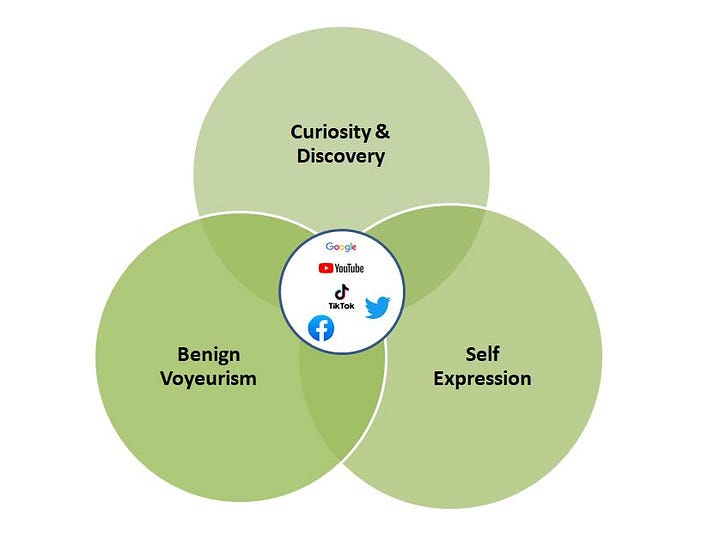
For the most popular and profitable modern products: Instagram, Twitter, Facebook, Snapchat, TikTok — none solves a real problem or addresses a tangible “pain.”
Instead — these products amplify behaviors that makes the user feel good.
The TikTok Test
Sometimes the question is not — “what problem are you solving” but instead “what fundamental human desire or behavior are you enabling? “
Instead of judging a startup idea by “what problem does it solve” — ask for the Tik Tok Test:
Does the product offer users:
- CONNECTION: Does it enable a large affinity group to connect better, bigger, faster?
- SELF EXPRESSION: Does it enable more self expression — to a larger group? to specific or new groups?
- CURIOSITY & DISCOVERY: does it enable others to discover, or satisfy curiosity? or to go on a journey that involves new connections?
- BENIGN VOYEURISM: does it enable large groups to observe what each other is doing? saying?
If so — you might have winning product — one that provides pleasure over pain relief — and a product users can’t live without.
CJ Cornell is a serial entrepreneur, investor, advisor, mentor, author, speaker, and educator. As an entrepreneur, CJ Cornell was a founder of more than a dozen successful startup ventures that collectively attracted over $250 million in private funding; created nearly a thousand new jobs; and launched dozens of innovative consumer, media, and communications products — that have exceeded $3 billion in revenues.
He is the author of the bestselling “The Age of Metapreneurship — A Journey into the Future of Entrepreneurship.”

And the upcoming “The Startup Brain Trust — A Guidebook for Startups, Entrepreneurs, and the Mentors that Help them Become Great.”
Follow him @cjcornell or visit: www.cjcornell.com
Image Credit — Maslow’s Hierachy of Needs diagram
https://www.flickr.com/photos/37676753@N08/3779974493
BetterBizIdeas — This work is licensed under the Creative Commons Attribution 2.0 License.
